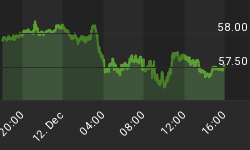Presumably, the Federal Reserve is preparing to embark on another round of quantitative easing (QE) - that is, another round of open market purchases of securities. Hints dropped by various Fed officials are that this second round of quantitative easing (QE2) will involve some open-ended purchases of longer-maturity Treasury securities. All else the same, these purchases would lower the interest rates on these longer-maturity Treasury securities. The expectation of the commencement of QE2 appears already to have lowered the yield on longer-maturity Treasury securities. With Treasury bond yields near post-WWII low levels even before the commencement of QE2 (see Chart 1), some are wondering whether a further decline in Treasury bond yields emanating from QE2 will have much positive effect on the aggregate demand for goods and services in the U.S. economy. Another byproduct of QE2, intended or unintended, appears to be the decline in the foreign-exchange value of the U.S. dollar (see Chart 2). All else the same, this would boost U.S. aggregate demand via increased exports.
Chart 1
Chart 2
But I do not think the level of U.S Treasury security interest rates or the level of the U.S. dollar foreign-exchange rate are the correct way to think about the prospective effectiveness of QE2. Rather, to judge whether QE2 is likely to stimulate the aggregate demand for U.S. goods and services, I will be observing the changes in another aggregate - the sum of Federal Reserve Bank credit and commercial bank credit. All else the same, when the commercial banking system increases its holdings of loans and securities, the recipients of this commercial bank credit are able to increase their current spending without any other entity in the economy having to cut back on its current spending. Similarly, an increase in Federal Reserve Bank credit enables the recipients of this credit to increase their current spending without any other entity in the economy having to cut back on its current spending.
When the Fed embarks on QE2, all else the same, Federal Reserve Bank credit will increase. What transpires with respect to commercial bank credit will determine the effectiveness of QE2 in increasing aggregate demand for U.S. goods and services. The more commercial bank credit increases in tandem with Federal Reserve Bank credit, the more effective will be QE2 in creating aggregate demand. If, however, commercial bank credit should decrease by the same or greater amount of the increase in Federal Reserve Bank credit, then QE2 will be a failure in creating additional aggregate demand. This is what happened when QE1 "set sail." Chart 3 shows the behavior of the sum of Federal Reserve and commercial bank credit. The shaded area in Chart 3 represents the period in which QE1 was in effect. As can be seen in Chart 3, during the "voyage" of QE1, the sum of Federal Reserve and commercial bank credit trended lower. Chart 4 shows how this came about (no sailing pun intended). A small increase in Federal Reserve Bank credit in the 16 months ended March 2010 was offset by larger decrease in commercial bank credit during the same period.
Chart 3
Chart 4
On Thursday afternoons, Federal Reserve Bank credit is reported. On Friday afternoons, commercial bank credit is reported. I will be charting the course of QE2 every Friday afternoon.
Paul Kasriel is the recipient of the 2006 Lawrence R. Klein Award for Blue Chip Forecasting Accuracy
















